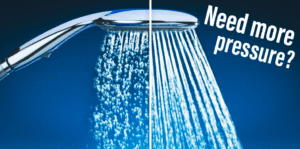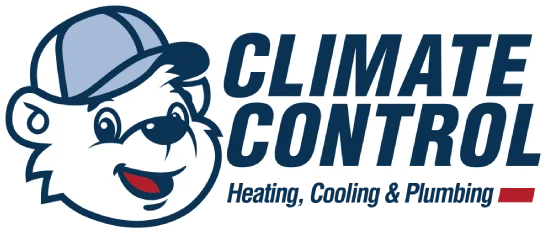The Most Common Misconception About Water Pressure

It seems that a common request we get from our customers is asking for more water pressure, especially at the showerheads. Let’s chat about what’s actually happening and what we can do to fix it.
Pressure vs. Flow
Most likely, when you’re asking for more pressure, you’re actually meaning you’d like more flow. Let’s take a quick minute to discuss the difference. The pressure is the static force the water makes against the walls of the pipe. Flow has to do with the speed and volume of water moving through the pipe. So, what’s the difference? It’s quite common to find static water pressure that is elevated and possible too high, meanwhile, your showerheads are still flowing below your expectations. To a point, the more pressure you have, the more flow you’ll see. But there are many other factors that affect your flow much more than water pressure. It’s always our goal to ensure your water pressure is adequate while your flow is also meeting your expectations.
Pressure
The codebook states the maximum allowable static water pressure in your home is 80 pounds per square inch (psi). If your water pressure is above 80 psi, we first need to correct that before we can proceed to your shower head flow rates. High water pressure can damage a lot of things and is the most-costly symptom we find in your home. Water pressure that is too high can fail your water heater, dishwasher, washing machine, humidifier, ice maker, steam dryer, faucets, toilets, and valves. Every plumbing fixture made is designed for code-approved water pressures. When the water pressure is too high, all these fixtures can begin to fail. Later on, we will discuss how we control water pressure.
Flow
Plumbing fixtures come from the factory with a limited flow to meet certain government standards. It’s pretty common for these flow rates to be less than satisfactory. There are two factors that determine flow; opening size, and the pressure we push water through that opening. As we stated above, we have some limits on the water pressure so we can’t alter that too much. That leaves us with making modifications to the size of the opening to achieve your desired flow rate. We can usually make some adjustments that will make you fall in love with your shower again all while keeping your water pressure at a safe level.
But What about Water Conservation?
We can all agree that saving water is a great thing. But there are a few areas where reducing the flow-rates aren’t actually saving water. It’s just making it take longer to get the job done. The easiest example is your bathtub. Your bathtub faucet is unrestricted in terms of flow. It just doesn’t make sense to reduce the flow when you’re going to fill the tub to your desired level and use the same amount of water no matter how long it takes. Now, let’s take the shower for instance. You have a job to do in the shower and it takes longer with less water. So, by slightly increasing the flow to your showerhead you can take shorter showers while using virtually the same amount of water.
Another example is the kitchen sink. When you’re filling the sink to do dishes, it doesn’t matter how much or how little your faucet flows. You are going to run the faucet until the sink is full and that amount of water it was it is. So, a fast-flowing kitchen sink doesn’t necessarily use more water but it does let you get done with dishes faster.
The same is also true for toilets. Toilets need a certain amount of water to get the job done. Otherwise, we have to flush multiple times and wipe away all that saved water. Now, lavatory faucets are different. A large percentage of the use of a lavatory faucet is small momentary uses where large volumes of water aren’t desired. This makes them perfect candidates to reduce flow rates and conserve water.
How Do We Control High Water Pressure?
The two items needed to maintain proper water pressure are a pressure regulating valve and a thermal expansion tank. These two items work together to regulate the incoming water pressure and then keep it under control throughout your water heating cycles. When these items are in place, your plumbing will last many more years. It’s your water provider’s job to supply their service area with ample water pressure. In doing so, some of the service area is being supplied with well over 80 psi. As cities grow, so does the demand for water. The water providers are tasked with using their existing infrastructure to supply those additional demands. They do this by increasing the water pressure in their water main lines. Remember, more pressure means more flow. They might be delivering you with more than 80 pounds of water pressure, so it becomes your responsibility to regulate that back down to code-approved limits.
The Takeaway
Proper water flow saves you tons of time and makes you happy. Proper water pressure saves you tons of money in repairs and makes your plumbing happy. The good news is that we can usually fix both!
Climate Control Heating, Cooling & Plumbing is your trusted resource for plumbing repair in Liberty, MO.
Contact us today for “Comfort & Care from the Team with the Bear”!

